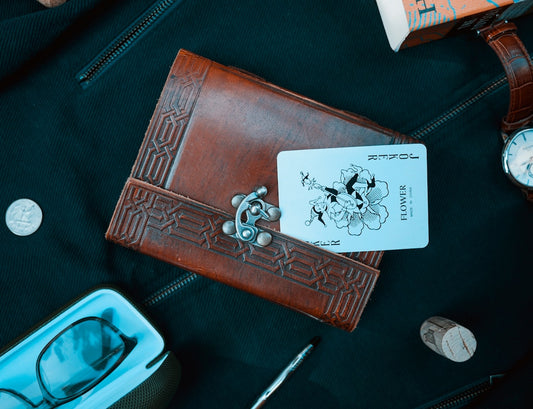
Understanding A/B Testing Fundamentals for Shopify Merchants
Share
Understanding A/B Testing Fundamentals for Shopify Merchants
In today's competitive e-commerce landscape, Shopify merchants must continuously optimize their stores to drive conversions, boost engagement, and maximize ROI. Understanding A/B testing fundamentals is crucial to making informed, data-driven decisions that enable your store to thrive. In this comprehensive guide, we explore what A/B testing is, how it benefits your Shopify store, and actionable steps to implement successful tests. Whether you're a business owner, contractor, or prosumer managing your Shopify platform, mastering A/B testing can significantly enhance your e-commerce success.
What Is A/B Testing (Split Testing)?
A/B testing, also known as split testing, involves a controlled experiment comparing two versions—Version A (the control) and Version B (the variation)—of your digital assets such as webpages, emails, marketing messages, or app interfaces. The core purpose of A/B testing is to identify which version yields better outcomes concerning predefined goals, such as conversion rates, click-through rates (CTR), or overall user engagement.
The Scientific Foundation of A/B Testing
The basic scientific methodology behind A/B testing involves randomly dividing your target audience into two groups. One segment sees the control version, while the other sees the variation. Statistical analysis is then conducted to identify any significant differences in performance. This rigorous method ensures that observed performance variations are unlikely to occur by random chance and provides quantifiable insights to guide your marketing and design decisions.
Key Benefits of A/B Testing for Shopify Merchants
As Shopify merchants, here's why making A/B testing an integral part of your store optimization strategy matters:
- Data-Driven Decisions: Move beyond guesswork with empirical evidence.
- Improved Conversion Rates: Optimize elements like checkout processes, pricing pages, and product images to enhance conversions.
- Reduced Risk: Validate changes on smaller audiences first, minimizing unintended consequences before full rollout.
- Enhanced User Experience (UX): Refine designs and navigation to align with user preferences and boost customer satisfaction.
- Increased ROI: Efficiently allocate resources toward tested improvements with measurable impacts.
For more detailed insights on enhancing user experience and store usability, you can explore our recent article on UX best practices from Baymard Institute.
The Essential Components of Effective A/B Testing
Executing a successful A/B test in your Shopify store hinges on several key components:
- Hypothesis: Clearly state both what you're testing and your expected results.
- Control: Original, unmodified version of your asset.
- Variation: Slightly modified version incorporating the tested element.
- Sample Size: Ensure the test covers a statistically robust number of users.
- Randomization: Assign participants randomly to eliminate bias.
- Metrics (KPIs): Define measurable outcomes aligned with business goals (conversions, purchases, bounce rates).
- Statistical Significance: Use statistical methods to verify that results didn’t occur by chance (usually indicated via a p-value of less than 0.05).
- Test Duration: Run each test long enough to account for fluctuations in traffic and purchasing behavior.
How A/B Testing Impacts Your Shopify Website Performance
Strategically applying these fundamentals can significantly enhance your Shopify website's performance, resulting in:
- Increased Conversion Rates: Better sales funnel optimization leads to higher revenue.
- Lower Bounce Rates: Improved site navigation encourages visitors to stay longer.
- Enhanced User Engagement: Compelling content and optimized functionality foster interactions and retention.
- Higher Revenue per Visitor: Attractive and intuitive user experiences boost average order values.
- Improved SEO Metrics: Increased engagement rates and lower bounce rates positively impact search rankings.
Step-by-Step Guide to A/B Testing in Shopify
Step 1: Identify Element & Formulate Hypothesis
Select a specific element (e.g., a CTA button color or product copy) and clearly define what you expect to achieve by changing this element. For instance, "Changing the button color to green may increase clicks as it implies action."
Step 2: Create Variations
Design two versions— your original ("control") and modified ("variation"). Maintain minimal differences between each version to accurately pinpoint influences on user behavior.
Step 3: Split Audience
Utilize A/B testing software or Shopify apps to split your traffic randomly, ensuring unbiased audience allocation across both versions.
Step 4: Run Your Test
Run your test for a sufficient duration, ideally over full business cycles or weeks. Avoid stopping the test prematurely due to early trends.
Step 5: Analyze Results
Use analytical tools such as expert Shopify analytics services to interpret your data, conclusively determining if your variation achieved statistically significant improvements.
Step 6: Implement Winning Version
Should significant findings emerge, deploy the winning design or content version sitewide and continuously monitor its ongoing success closely.
A/B Testing Best Practices for Shopify Stores
- Test one variable per experiment.
- Use sufficient sample sizes and durations.
- Randomize audience segments.
- Clearly define meaningful KPIs.
- Consider external influences, like seasonal promotions.
- Continuously document insights gained for future reference.
- Maintain ongoing testing and iterations over time.
To structure your marketing effectively, consider reading our article on the 4Ps of Marketing for Shopify Merchants, providing comprehensive marketing strategies tailored specifically for e-commerce success.
Frequently Asked Questions About A/B Testing
How Is A/B Testing Different from Multivariate Testing?
A/B tests involve comparing just one difference between two versions at a time. Multivariate testing involves comparing multiple variations simultaneously to uncover how combinations interact and influence performance collectively.
What A/B Testing Tools Can Shopify Merchants Use?
Leading testing tools include Optimizely, VWO, and Adobe Target; these platforms seamlessly integrate with your Shopify store.
Do I Need Coding Skills for A/B Testing on Shopify?
Not necessarily. Many intuitive software options provide visual editors enabling easy set-up without extensive technical knowledge.
Final Thoughts: Leveraging A/B Testing for Shopify Success
A solid grasp of A/B testing fundamentals empowers Shopify merchants and contractors to systematically drive continuous improvement across their online stores. The strategic use of A/B testing generates tangible enhancements in your site's performance metrics, customer satisfaction, and overall business revenue. Implement A/B testing techniques strategically into your store optimization routine. Ready to optimize your Shopify store further? Explore our comprehensive optimization plans tailored to amplify your business growth.



